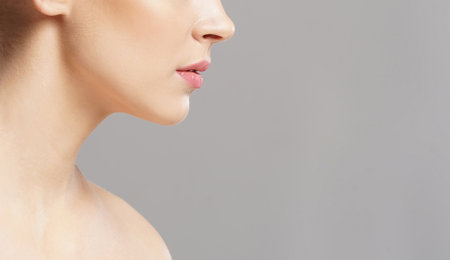What Are Cheek Fillers?
Cheek fillers are a popular non-surgical cosmetic treatment designed to enhance facial contours, restore lost volume, and create a more youthful appearance. They are injectable substances that help lift and define the cheekbones, providing a natural and refreshed look.
What Are Cheek Fillers Made Of?
Most cheek fillers are made from hyaluronic acid (HA), a naturally occurring substance in the body that helps retain moisture and keep the skin plump. Other types of fillers include calcium hydroxylapatite (CaHA) and poly-L-lactic acid, which stimulate collagen production for longer-lasting results.
| Type of Filler | Main Ingredient | Key Benefits |
|---|---|---|
| Hyaluronic Acid (HA) | Hyaluronic Acid | Adds volume, hydrates skin, reversible |
| Calcium Hydroxylapatite (CaHA) | Calcium-based microspheres | Stimulates collagen, longer-lasting results |
| Poly-L-lactic Acid | Synthetic biodegradable polymer | Gradually builds collagen, long-term effects |
How Do Cheek Fillers Work?
The filler is injected into specific areas of the cheeks using a fine needle or cannula. Once injected, it adds volume and structure to the face, helping to lift sagging skin and enhance facial symmetry. Depending on the type of filler used, results can last anywhere from 6 months to 2 years.
The Benefits of Cheek Fillers
- Non-Surgical Solution: Unlike facelifts or implants, cheek fillers require no surgery or downtime.
- Naturally Enhanced Appearance: They provide subtle yet effective contouring for a more youthful look.
- CUSTOMIZABLE RESULTS: The amount and placement of filler can be tailored to your unique facial structure.
- LITTLE TO NO DOWNTIME: Most people return to their daily activities immediately after the procedure.
2. Who Is a Good Candidate for Cheek Fillers?
Cheek fillers are a popular cosmetic treatment that can enhance facial contours, restore lost volume, and create a more youthful appearance. But how do you know if youre the right candidate for this procedure? Let’s explore the ideal candidates based on age, skin type, and aesthetic goals.
Ideal Candidates for Cheek Fillers
Cheek fillers work best for individuals who want to achieve a fuller and more lifted look. Here are some factors that determine if you’re a good candidate:
✔ Age
While there’s no strict age requirement for cheek fillers, most candidates fall into one of these groups:
| Age Group | Why They May Consider Cheek Fillers |
|---|---|
| 20s – 30s | Enhancing natural cheekbone structure and creating a more contoured look. |
| 40s – 50s | Restoring volume lost due to aging and reducing the appearance of sagging. |
| 60+ | Smoothing deep lines and adding subtle lift to maintain a youthful appearance. |
✔ Skin Type & Condition
Your skin type plays a role in how well fillers will integrate with your facial structure. Generally, people with normal to dry skin benefit the most, as the filler helps add hydration and plumpness. If you have highly sensitive or reactive skin, consult with a professional to determine the best approach.
✔ Aesthetic Goals
If any of the following goals resonate with you, cheek fillers might be a great option:
- You want to enhance your cheekbones for a sculpted appearance.
- You’ve noticed volume loss and want to restore fullness.
- You want a non-surgical way to achieve youthful-looking skin.
Who Should Avoid Cheek Fillers?
Certain individuals may not be ideal candidates for cheek fillers, including those who:
- Are pregnant or breastfeeding.
- Suffer from severe allergies or autoimmune conditions affecting healing.
- Have unrealistic expectations about results.
- Aren’t ready for maintenance treatments (fillers require touch-ups over time).
If you’re unsure whether cheek fillers are right for you, it’s always best to schedule a consultation with an experienced injector who can assess your facial structure and recommend the best options tailored to your needs.
![]()
3. The Procedure: What to Expect
Getting cheek fillers is a quick and minimally invasive procedure, but knowing what to expect can help ease any anxiety. Here’s a step-by-step breakdown of the treatment process, from consultation to post-procedure care.
Step 1: Consultation
Your journey begins with a consultation with a qualified provider. During this appointment, youll discuss your aesthetic goals, medical history, and any concerns you may have. Your provider will assess your facial structure and recommend the best type of filler for your needs.
What Happens During the Consultation?
- Discussion of desired results
- Medical history review
- Facial assessment
- Treatment plan recommendation
- Cost estimate and expectations
Step 2: Preparation
Before the injections begin, your provider will cleanse your skin and may apply a numbing cream to minimize discomfort. Some fillers also contain lidocaine, a local anesthetic that helps reduce pain during the procedure.
Pre-Treatment Guidelines
- Avoid alcohol and blood-thinning medications (e.g., aspirin, ibuprofen) for at least 24 hours before treatment.
- Stay hydrated and eat a light meal before your appointment.
- Arrive with clean skin—no makeup or skincare products on the treatment area.
Step 3: Injection Process
The actual injection process is relatively quick, typically taking about 15-30 minutes. Your provider will use a fine needle or cannula to inject the filler into targeted areas of your cheeks. They may gently massage the area to ensure even distribution.
What to Expect During Injections?
| Step | What Happens? |
|---|---|
| Marking the Injection Sites | Your provider will mark strategic points on your cheeks for precise filler placement. |
| Injecting the Filler | The filler is carefully injected in small amounts to achieve natural-looking volume. |
| Sculpting and Massaging | Your provider may massage the area to shape the filler evenly. |
| Final Assessment | A mirror check allows you to see the immediate results and provide feedback if needed. |
Step 4: Post-Procedure Care
Once the procedure is complete, you might experience mild swelling, redness, or bruising. These side effects are temporary and usually subside within a few days.
Aftercare Tips
- Avoid touching or massaging the treated area unless instructed by your provider.
- Stay upright for at least 4-6 hours after treatment to prevent filler migration.
- Avoid strenuous exercise, saunas, and excessive sun exposure for 24-48 hours.
- Use ice packs to reduce swelling if needed.
- Follow up with your provider if you have any concerns or questions.
The entire cheek filler procedure is relatively simple and offers immediate results with minimal downtime. By understanding each step in advance, you can feel confident and prepared for your treatment!
4. Risks, Side Effects, and Recovery
Cheek fillers can provide a youthful and contoured appearance, but like any cosmetic treatment, they come with potential risks and side effects. Understanding what to expect can help you make an informed decision and ensure a smooth recovery.
Potential Risks of Cheek Fillers
While cheek fillers are generally safe when administered by a trained professional, there are some risks to be aware of:
- Allergic Reactions: Although rare, some individuals may have an allergic reaction to the filler material.
- Infection: Any injection carries a small risk of infection if proper sterilization is not followed.
- Asymmetry: Uneven distribution of the filler can cause one cheek to appear different from the other.
- Nodules or Lumps: In some cases, small lumps or irregularities may form under the skin.
- Vascular Complications: If the filler is accidentally injected into a blood vessel, it can lead to serious complications such as tissue damage.
Common Side Effects
The majority of side effects from cheek fillers are mild and temporary. Here’s what you might experience after your treatment:
| Side Effect | Description | Duration |
|---|---|---|
| Swelling | Mild to moderate swelling around the injection site. | A few days to a week |
| Bruising | Slight discoloration due to minor bleeding under the skin. | A few days to two weeks |
| Tenderness | The treated area may feel sore or sensitive to touch. | A few days |
| Redness | The skin may appear slightly red where the injections were placed. | A few hours to a couple of days |
Tips for a Smooth Recovery
If you want to minimize discomfort and speed up healing, consider these recovery tips:
Avoid Touching Your Face
Your cheeks may feel slightly firm or swollen after treatment, but avoid massaging or pressing on them unless instructed by your provider.
Stay Hydrated and Eat Healthy
A well-balanced diet and plenty of water can support your bodys healing process and reduce swelling.
Avoid Strenuous Exercise
Avoid intense workouts for at least 24-48 hours post-treatment to prevent excessive swelling or bruising.
Soothe Swelling with Cold Compresses
If you notice swelling, applying a cold compress gently over the area can help reduce it.
Avoid Alcohol and Blood Thinners
Aspirin, ibuprofen, and alcohol can increase bruising, so its best to avoid them for at least 24 hours before and after treatment.
If You Experience Unusual Symptoms…
If you notice severe pain, prolonged swelling, skin discoloration, or any unusual symptoms, contact your provider immediately. While complications are rare, early intervention is key in preventing more serious issues.
5. How Long Do Cheek Fillers Last?
One of the most common questions people have before getting cheek fillers is how long they will last. The longevity of cheek fillers depends on several factors, including the type of filler used, your bodys metabolism, and lifestyle choices. Below, we’ll break down the different types of fillers and what can impact their duration.
Types of Cheek Fillers and Their Longevity
There are several types of dermal fillers commonly used for cheek augmentation, each with its own lifespan. Here’s a general breakdown:
| Type of Filler | Common Brands | Longevity |
|---|---|---|
| Hyaluronic Acid (HA) Fillers | Juvederm Voluma, Restylane Lyft | 12-24 months |
| Calcium Hydroxylapatite (CaHA) Fillers | Radiesse | 12-18 months |
| Poly-L-lactic Acid (PLLA) Fillers | Sculptra | Up to 2 years or more |
| Polymethylmethacrylate (PMMA) Fillers | Bellafill | Permanently lasts with touch-ups |
Factors That Affect How Long Fillers Last
The exact duration of your cheek fillers can vary based on individual factors. Here are some key aspects that can influence how long your results will last:
Your Metabolism
If you have a fast metabolism, your body may break down the filler more quickly, leading to shorter-lasting results.
The Type of Filler Used
Denser fillers like Juvederm Voluma and Radiesse tend to last longer than softer fillers used for fine lines.
Lifestyle Choices
Certain habits can impact the longevity of your fillers. Frequent exercise, excessive sun exposure, and smoking can accelerate filler breakdown.
The Injection Technique and Provider Expertise
An experienced injector knows how to place the filler strategically for optimal longevity. Poor technique can lead to faster dissipation.
How to Make Your Fillers Last Longer
If you want to get the most out of your cheek fillers, here are some tips:
- Avoid excessive sun exposure and always wear SPF.
- Stay hydrated and maintain a healthy skincare routine.
- Avoid smoking and excessive alcohol consumption.
- Schedulem touch-up treatments as recommended by your provider.
- Select an experienced injector who understands facial anatomy well.
The longevity of cheek fillers varies from person to person, but understanding what affects their duration can help you make an informed decision. If youre looking for lasting results, choosing the right filler type and taking care of your skin post-treatment are key factors in maintaining your enhanced look.
6. Cost and Choosing the Right Provider
Cheek fillers can be an amazing way to enhance facial contours, but cost is a major factor to consider before making a decision. Pricing can vary based on several factors, including the type of filler used, the provider’s expertise, and your geographic location. Below, we break down typical costs and provide key tips for choosing a qualified injector.
How Much Do Cheek Fillers Cost?
The cost of cheek fillers depends on multiple elements such as the brand of filler, the amount needed, and where you get the treatment. Most clinics charge per syringe, and patients may require one or more syringes for optimal results.
| Filler Type | Average Cost Per Syringe | Longevity |
|---|---|---|
| Hyaluronic Acid (Juvederm, Restylane) | $600 – $1,200 | 6 – 18 months |
| Calcium Hydroxylapatite (Radiesse) | $700 – $1,500 | 12 – 24 months |
| Poly-L-lactic Acid (Sculptra) | $800 – $1,800 | Up to 2 years |
The total price you pay will depend on how much volume is needed to achieve your desired look. Some providers offer package deals or discounts for multiple syringes.
Factors to Consider When Choosing a Provider
Selecting the right injector is just as important as the filler itself. Here are some key factors to keep in mind:
1. Credentials and Experience
Your injector should be a licensed medical professional with specialized training in dermal fillers. Board-certified dermatologists and plastic surgeons typically have extensive experience in facial aesthetics.
2. Before-and-After Photos
A reputable provider should have a portfolio of past work showcasing natural-looking results. Ask to see before-and-after photos to ensure their aesthetic aligns with your goals.
3. Reviews and Reputation
Check online reviews on platforms like Google, RealSelf, or Yelp. Patient testimonials can give you insight into the injectors skill level and professionalism.
4. Consultation Process
A good provider will offer a thorough consultation to discuss your goals, assess your facial structure, and recommend the best approach for your needs.
5. Safety and Cleanliness
The clinic should follow strict hygiene standards and use FDA-approved products. Avoid places that offer significantly lower prices than average, as this could indicate lower-quality products or lack of proper training.
The Bottom Line on Cost and Choosing an Injector
The price of cheek fillers varies based on different factors, but investing in a skilled injector ensures safe treatment and beautiful results. Always prioritize experience and safety over cost alone when selecting a provider.


